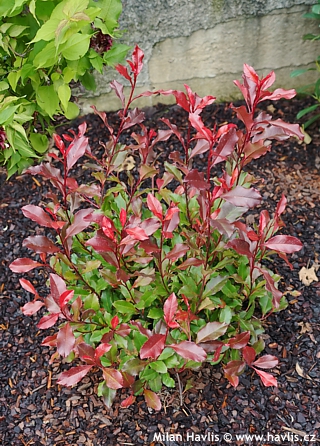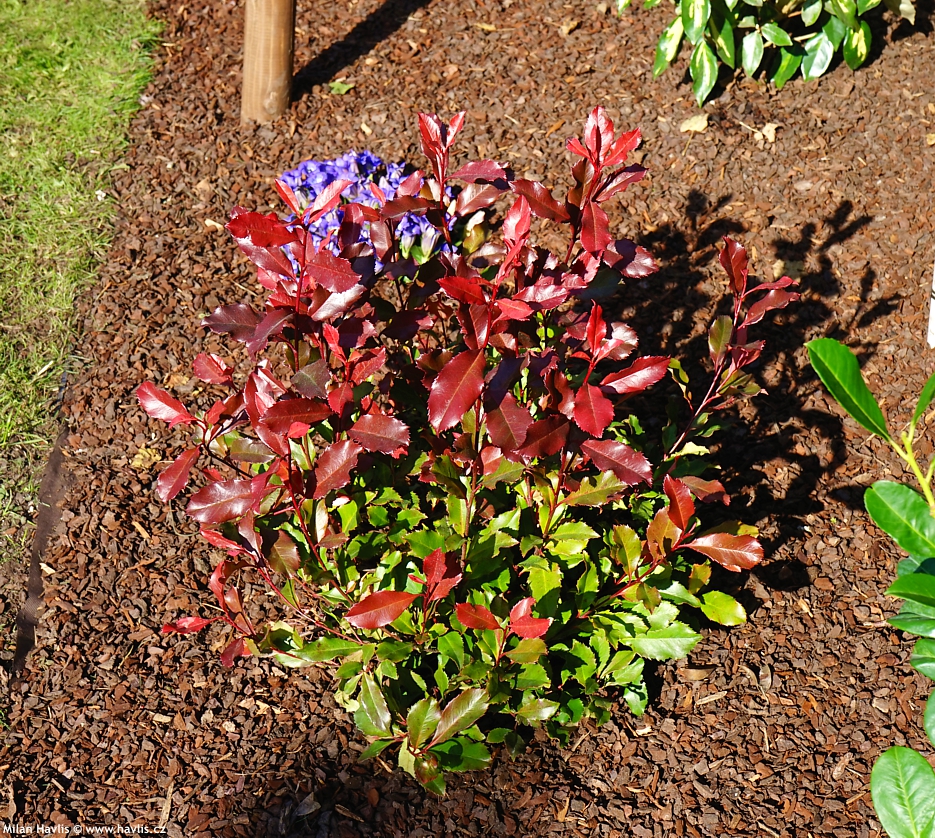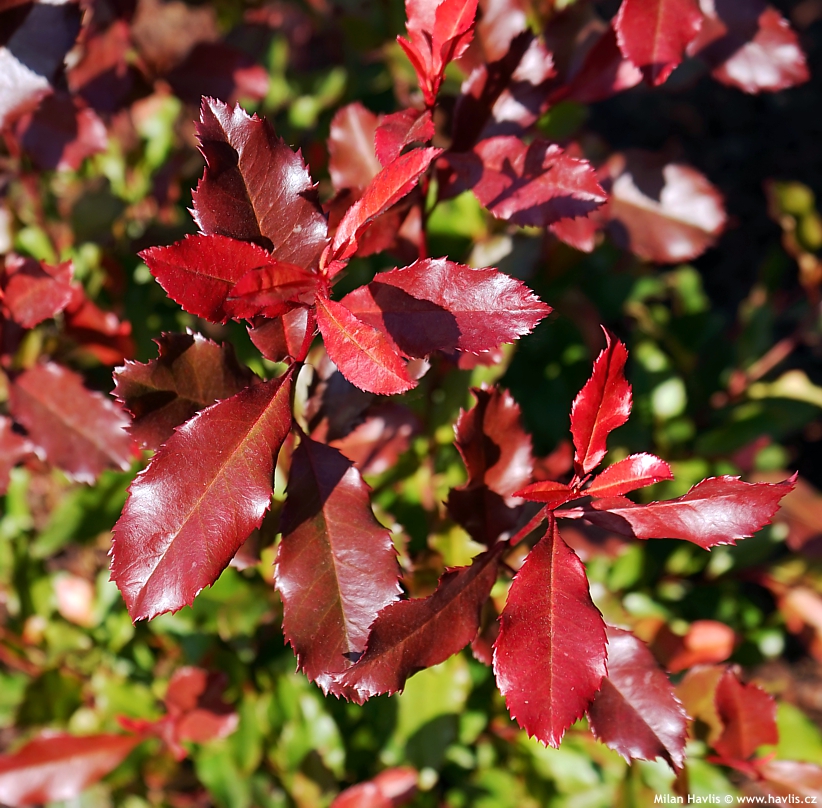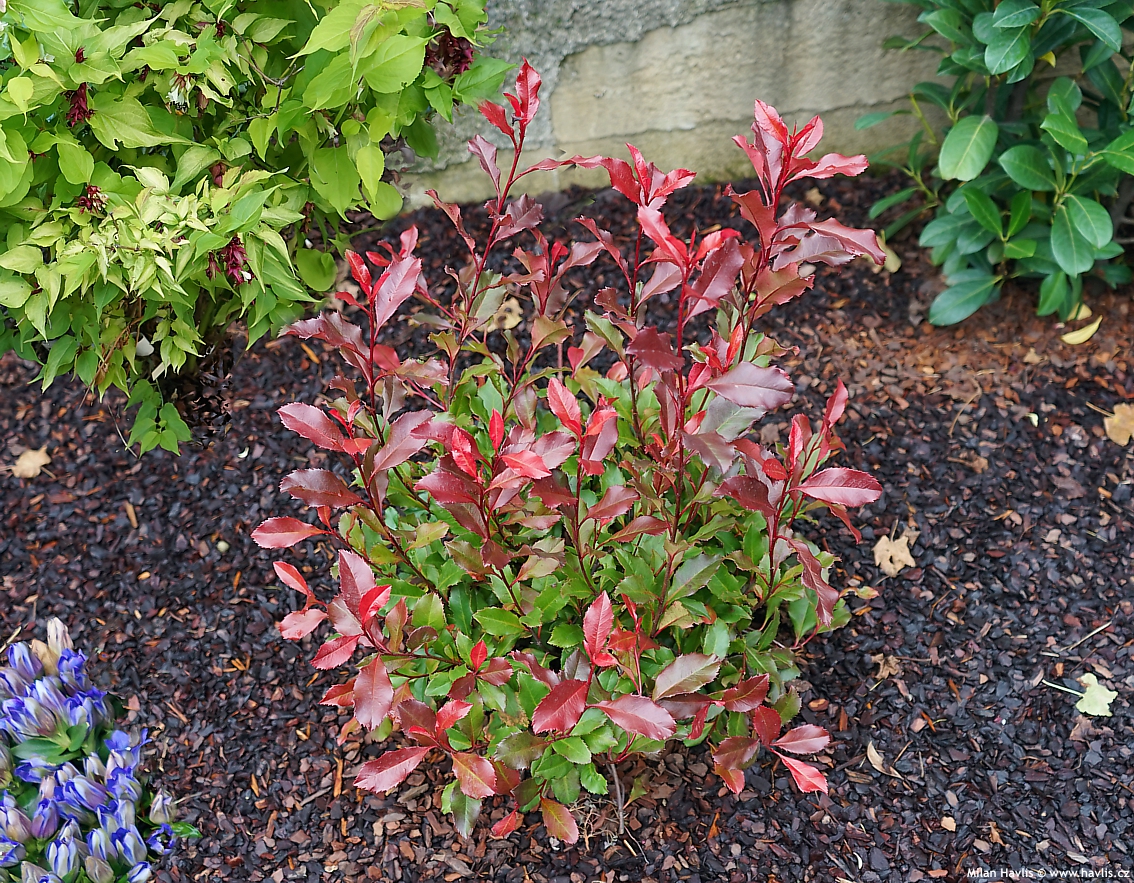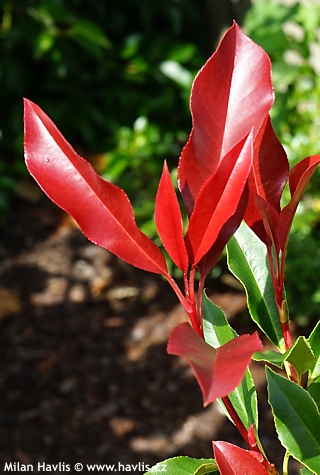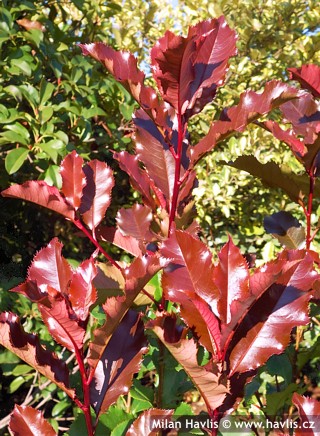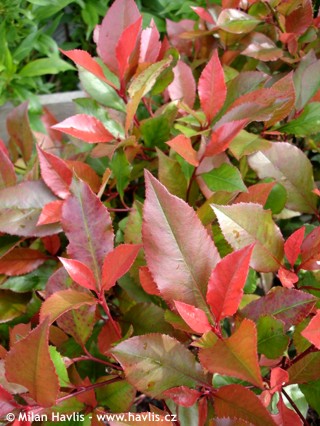Photinia x fraseri 'Bourfrits' CORALLINA Fraser's photinia
size/type
medium-sized shrub,medium-sized shrub
usual height
1-2m
usual width
1-2m
leaves
evergreen broadleaf
colour of leaves
location
full to partial sun
soil type
any (acidic to alkaline)
soil moisture requirements
evenly moist but well-drained
USDA zone (lowest)
7 (down to -23°C)
winter protection
for zone 5+6

for zone 7

categorized
Photinia
Fraser’s photinia is an evergreen shrub or a tree, a cross between Japanese photinia glabra and Chinese photinia serratifolia. It was found in American town Birmingham in Alabama around 1940 and introduced to commerce some 15 years later named Birmingham. For some reason this name was soon dropped, and USA was flooded with millions of plants of super attractive Fraser's photinia. Originally it was used as lush specimen evergreen shrub but soon after it became possibly the most common evergreen hedging shrub of the south, and as it was trialled far north it reached states in USDA zone 7 and even 6 where its distribution stopped.Description of the plant:
CORALLINA is a Fraser’s photinia variety bred by Andre Bourquin from a town Bordèrez-sur-l'Èchez (S.W. France near the Spanish border) in 1994 by self-pollinating Red Robin variety and subsequent selection of seedlings. The result is a handsome plant of shorter growth and unique foliage. I must confess that with so many existing photinia varieties in trade I had a somewhat skeptical approach when I was to examine it as a novelty. But all my doubts fell apart as soon as I took it in my arms and the plant looked me in my eyes and said, "I am a pretty little piece, gardener, don’t you think?". And I all I could say was, "I do, my darling". Granted patents: PP20469 (USA – 2009 and 25131 (Europe – 2009).CORALLINA is an evergreen photinia with conspicuously serrated margins on undulated leaves. They are highly glossy, oval to broadly elliptical, they emerge bright red in spring and mature to medium green in about a month afterwards. In late summer there is a second flush of new leaves and this time they are deeper red showing and exciting shade of dark maroon.
It grows medium fast, about 20-30 cm per year, producing slender and flexible branches which move even in a slight breeze. Side branches may be too thin and arch. If they spoil the overall appearance they can be removed at any time. In late spring older plants produce profusion of dense corymbs composed of tiny white flowers followed by small, firm, spherical fruit on long stalks in autumn but no flowers have been observed on this variety yet.
CORALLINA, though a photinia which is typically a hedging plant, is a compact shrub you can use as a specimen or among another smaller shrubs of different colors and shapes, or in informal borders along pathways, lawns, or flower beds.
Fraser's photinia is not very fussy about soil type, it only hates waterlogged and compacted ground. Low pH (acidic) soil will enhance the depth of leaf colour but is not essential. For best results grow it in moist but well-drained, humus-rich, acid soil. In order to retain moisture and to keep the ground from temperature swings in winter, keep it mulched all year round, especially during the first years after transplanting. Photinia is quite drought tolerant when fully established but might suffer during dry winters of zone 6 so an extra watering is advisable once a month in frost-free periods if the ground is dry and not frozen. It is hardy to about -24 °C (USDA zone 6).
Last update 25-11-2022
QUICK PRICE OVERVIEW
CURRENTLY SOLD OUT
WANT TO TRY A SIMILAR PLANT?












